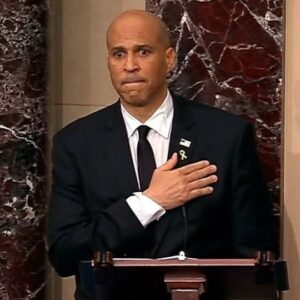Tyler Robinson, 22, the man accused of assassinating Turning Point USA founder Charlie Kirk at Utah Valley University, continues to be at the center of an intensifying investigation. New revelations suggest that Robinson may have attempted to retrieve the alleged murder weapon hours after the shooting — only to be thwarted by law enforcement officers securing the scene.
According to Utah Department of Public Safety Commissioner Beau Mason, Robinson returned to the UVU campus the night of September 10, after Kirk was struck in the neck by a sniper’s bullet during a Turning Point USA event. Mason confirmed that Robinson “made contact” with a police officer stationed near the wooded edge of the campus, where investigators later discovered a Mauser .30-06 rifle wrapped in a towel. The commissioner declined to provide full details of the exchange, citing the ongoing investigation, but he suggested that Robinson’s attempt to retrieve the firearm was interrupted.
Authorities believe Robinson had staged the weapon near the perimeter of the campus in preparation for the attack. Following the shooting, a campus-wide lockdown was ordered, and law enforcement heavily patrolled the area. Robinson’s return to the scene — and his interaction with police — may have been a critical misstep that left behind key evidence now forming the backbone of the case.
Investigators have pieced together Robinson’s movements in the hours after the shooting. Surveillance footage reportedly captured him visiting a local restaurant, behaving as though he were carrying on with ordinary tasks. However, digital evidence paints a darker picture. Prosecutors have released excerpts of text messages between Robinson and his roommate and romantic partner, Lance Twiggs, that evening. In them, Robinson allegedly confessed to carrying out the shooting, admitted he had left his rifle behind, and expressed regret for involving Twiggs in the fallout.
One text, prosecutors say, instructed Twiggs to look under Robinson’s keyboard at their home. There, Twiggs reportedly found a handwritten note that read: “I had the opportunity to take out Charlie Kirk, and I’m going to take it.” Police say Twiggs took a photograph of the note and has since been cooperating fully with the investigation.
Other messages show Robinson grappling with the reality of his actions. “I had planned to grab my rifle from my drop point shortly after, but most of that side of town got locked down,” one message reads. Another reveals his frustration at being unable to retrieve the weapon: “There is a squad car parked right by it. I think they already swept that spot, but I don’t wanna chance it.” He also voiced concern about the consequences of failing to return with the rifle, which he described as belonging to his grandfather.
Robinson’s parents and a family friend ultimately persuaded him to surrender roughly 33 hours after the shooting, preventing what law enforcement feared could have become a suicide. He turned himself in at his hometown in southern Utah, ending a manhunt that had gripped the region.
Forensic teams continue to analyze the rifle and the towel in which it was wrapped, along with electronic devices seized from Robinson’s residence. Prosecutors have filed charges including aggravated murder, obstruction of justice, and firearms violations, while investigators are still working to uncover the full scope of Robinson’s motives and planning.
The chilling detail of Robinson’s attempted return to the scene underscores the methodical nature of the investigation and highlights how close the accused may have come to erasing critical evidence. As court proceedings move forward, these findings are expected to play a significant role in establishing premeditation and intent, potentially shaping the ultimate outcome of the case.





